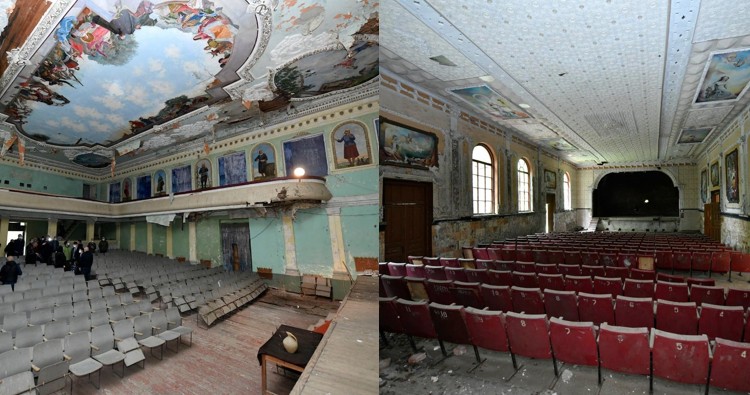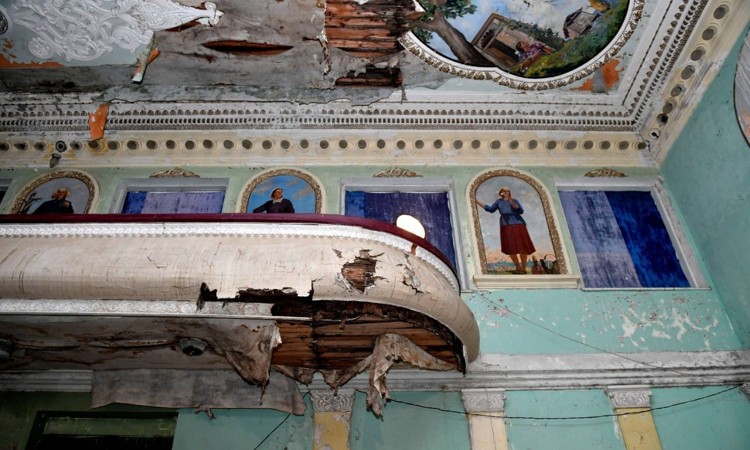Culture house buildings in western Georgian villages of Marani, Shroma to be restored

The two venues played important roles for local cultural events before falling into disrepair following the tumultuous 1990s in Georgia. Photo via Ministry of Culture, Sport and Youth
Two long-neglected culture house buildings built in the early 1900s and the mid-20th century in two villages of western Georgia will undergo thorough rehabilitation and renovation to bring back their importance to local communities and safeguard their status as cultural heritage monuments, the Culture Ministry has announced.
The move will see the culture houses in the Abasha Municipality village of Marani and the Ozurgeti Municipality village of Shroma restored from their dilapidated states. Both buildings require works on structural reinforcement and renovation after decades of neglect, with planned efforts looking to maintain their authentic visuals and elements, the Ministry said.
Established during the Soviet era in 1956, the Shroma Culture House has been described as "one of the most remarkable" among the venues of the kind across Georgia by the Ministry, with a "full rehabilitation" project targeting facades and the interior, the fence surrounding the building, and the yard.

A view on the Marani Cultural House hall, with the slogan atop the seating area saying 'Culture belongs to the people!". Photo via Ministry of Culture, Sport and Youth
Rehabilitation professionals will also ensure provision for needs of disabled visitors in the updated building, while maintaining its "historical appearance", "all architectural elements" and "artistic decor," the national body revealed.
The Shroma Culture House is recognised for the rich selection of decorative elements and Socialist Realism art adorning its main hall. The latter composition shows farmers in the province of Guria - where the cultural building is located - on backdrops of their native region.
In the other renovation project, locals of the Marani village will have a "multicultural centre of modern standards" after their own local culture house is renovated in a ₾1,248,000 ($403,000/€370,000) project.

Paintings on the walls of the Shroma Culture House. Photo via Ministry of Culture, Sport and Youth
As part of works under the effort, parts of the building will be first disassembled before its base and load-bearing walls are reinforced, various sections are repaired, and internal networks are set up, the Ministry said.
Built between the late 19th and early 20th centuries, the Marani Culture House is located in the village's Tskhenistskali River embankment in the Samegrelo-Upper Svaneti region. A 1980s rehabilitation made significant changes to the building, only leaving mosaic floor and brick pattern intact from the original venue.
The Culture House hosted theatre productions and film screenings during the 20th century, and features depictions of muses on its walls and the ceiling.
Both venues played important roles in local cultural lives before the tumultuous 1990s in Georgia, following the country's restoration of independence from the Soviet Union, left them without funds and maintenance effort.
 Tweet
Tweet  Share
Share